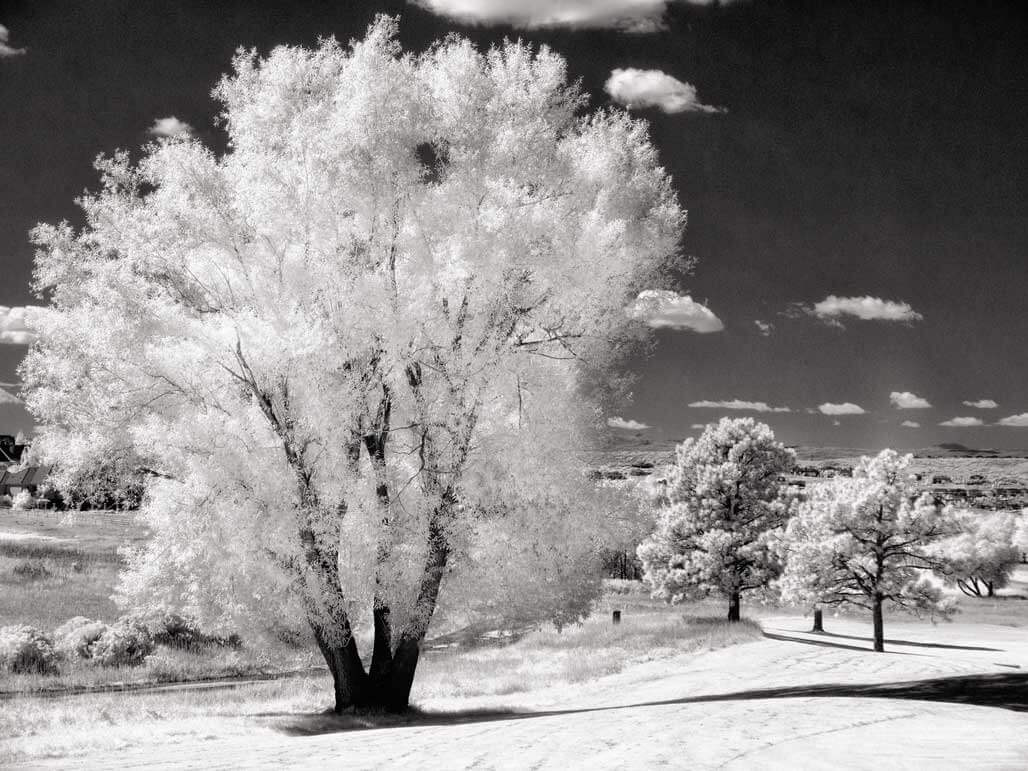Focusing in Infrared Photography
Today’s Post by Joe Farace
Focusing can be a problem in infrared photography but only if you want to make it one. You may be surprised (or not) to learn that light waves of different color (and wavelengths) don’t focus on the same plane when passing through a lens. Much like a prism, lens elements produce a rainbow of color called chromatic aberration as light passes through them.
Most lenses don’t focus infrared wavelengths on the same plane as visible light. You might want to read that sentence again. That’s why when you shoot infrared images it may be necessary to slightly shift the lens’ focus. Typically, the larger the lens’ aperture and the longer its focal length the greater this shift will be. That’s why manufacturers makers used to place a red dot or an ‘R’ on the focusing index or a curved red line on zoom lenses.
When shooting infrared, I try to shoot at f/16 to minimize any focus problems but you can’t always do that. Case in point: I was shooting with Olympus’ 9mm f/8.0 Fisheye Body Cap lens. This manual focus lens has a single fixed aperture and three manual focus settings: Infinity, Distant, and Close. When shooting normally with any of my Panasonic or Olympus Micro Four-thirds cameras this focusing scale works fine but in infrared capture with my converted Lumix G5 I found the best result for photographing what would normally be subjects at infinity are best shot at the middle—distant—setting. Don’t take my word for it; do your own tests.
A special offer for this blog’s readers: If you want to save a few bucks when converting your camera to infrared, use the coupon code “farace” when ordering a conversion from LifePixel.




